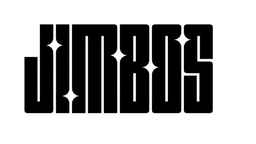Pad Dependent Polishing: What It Means and Why It Matters
If you’ve heard the term “pad dependent” and wondered what it means, here’s the quick answer:
The results of your polish are determined more by the pad you use than the liquid itself.
Sounds simple—but mastering this concept can completely change your paint correction game. Especially if you’re using a one-step polish like our upcoming Picture Perfect Polish.

What Is a Pad Dependent Polish?
Most modern polishes—especially one-steps—are designed to be “pad dependent.” This means they contain a balanced blend of abrasives and oils that can:
- Cut aggressively with a heavy-cut pad
- Finish cleanly with a soft polishing pad
- Adapt to any surface depending on how you pair pad + machine + speed
The polish formula stays the same—but your results change based on the pad you choose.
How Different Pads Affect Your Results
- Cutting Pads (microfiber or firm foam) – Remove deeper swirls and oxidation, but may leave haze or micromarring on soft paint
- Polishing Pads (medium foam) – Balance cut and finish for daily drivers or one-step jobs
- Finishing Pads (soft foam or waffle) – Perfect gloss with minimal correction
Same polish, three totally different outcomes.

Why This Matters with One-Step Polishing
One-step polishing is all about efficiency. You want maximum correction in minimum time—without needing multiple products.
A pad dependent polish like Picture Perfect Polish gives you total control. Need more bite? Grab a microfiber or URO Fiber pad. Want it buttery smooth? Switch to a soft foam pad and wipe it down with a microfiber towel.
How to Choose the Right Pad for the Job
1. Inspect the Paint
Heavy defects = start with a cutting pad. Light swirls = polishing pad. New car or soft paint = finishing pad.
2. Do a Test Spot
Always start with a test section. See how it looks with a medium foam pad. If the cut is too light, bump up to microfiber. If it hazes, back down to softer foam.
3. Adjust Technique Before Switching Products
Change pads, pressure, speed, or pass count before jumping to another polish. You’d be surprised what a simple pad swap can fix.
Bonus Tip: Pad Rotation is Key
Heat kills pad performance. Have 2–3 pads of each type ready and rotate them as you work. Clean them with compressed air or a pad brush between panels.
Watch our youtube vidoe on this:
Polishing is less about the liquid—and more about the system. When your polish is pad dependent, you’re in control. It gives you pro-level correction, customized for each job, using a single product.
🧼 Recommended Pairings:
- Polish: Picture Perfect Polish (Coming Soon)
- Prep: The Super Soaper
- Finish: Tough As Shell
- Wipe Down: Everyday Microfiber Towels
One polish. Multiple results. Total control. That’s the power of pad dependent polishing.




